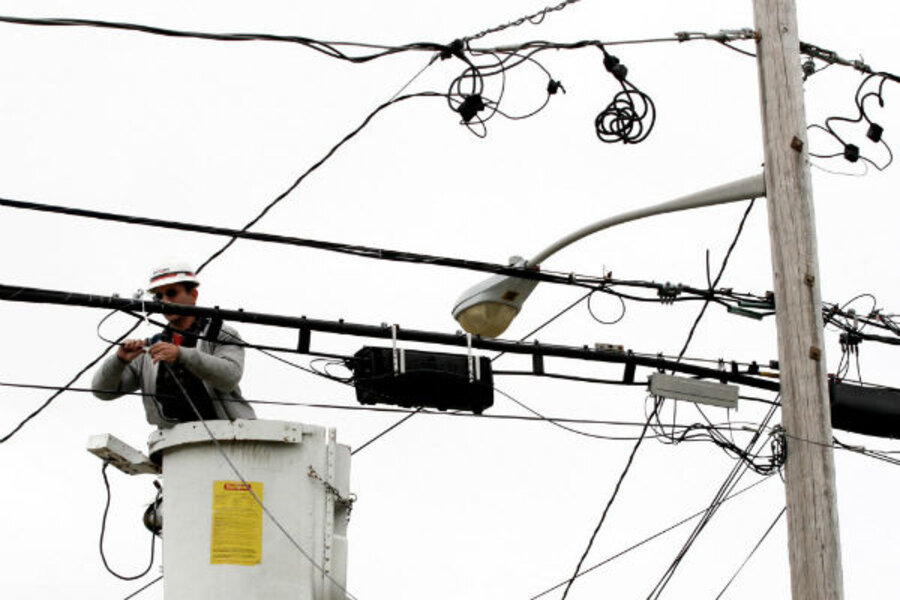Bell Labs achieves record-breaking speed over copper telephone line
Loading...
Bell Labs has announced it set a record for broadband by transmitting data over traditional copper telephone lines at a speed of 10 gigabits per second.
The research subsidiary of Alcatel-Lucent describes this as a "major breakthrough for copper broadband" as it could mean high-speed Internet connections provided by fiber-optic cables except the fiber cables might not need to be connected directly into people's homes. Instead, "fiber can be brought to the curbside, wall or basement of a building and the existing copper network used for the final few meters," a press release states.
"Our constant aim is to push the limits of what is possible to ‘invent the future’, with breakthroughs that are 10 times better than are possible today," says Marcus Weldon, President of Bell Labs, in a release. "Our demonstration of 10 Gbps over copper is a prime example: by pushing broadband technology to its limits, operators can determine how they could deliver gigabit services over their existing networks, ensuring the availability of ultra-broadband access as widely and as economically as possible."
To achieve this record, Bell Labs developed a technology it calls XG-FAST, building on the current G.fast technology. XG-FAST has a higher frequency range of 500 MHz as opposed to the 106 MHz of G.fast. But the trade-off is that XG-FAST operates over shorter distances.
While Bell Labs is touting this achievement as a major possible gain for rural communities that might otherwise not have the resources to connect fiber cables to people's homes, an analyst told the BBC that this still might not solve the problems of slow Internet speeds.
"The problem that rural properties have is that they are usually very far away from the nearest telephone exchange – you can usually measure it in miles," Chris Green, principal technology analyst at the Davies Murphy Group consultancy, told the BBC. "In order to get any of these speeds you would need to be close enough to your exchange – or fibre optic cable connected to it – that you could pretty much throw a stone at it from your door."
This comes at a time when desire for high-speed Internet connections is growing. Google is currently in the process of bringing fiber-optic connectivity to as many as 34 cities across the US. Google Fiber promises 1 Gbps, which it says is 100 times as fast as the average American broadband connections. Only 7 percent of broadband subscribers use fiber connections in the US. In Japan and South Korea, as many as 60 percent of users connect with fiber.
This announcement may indicate subscribers may not need to be as totally reliant on fiber for high-speed Internet connectivity as was previously thought.
"By making 1 gigabit symmetrical services over copper a real possibility, Bell Labs is offering the telecommunications industry a new way to ensure no customer is left behind when it comes to ultra-broadband access," said Federico Guillén, president of Alcatel-Lucent’s Fixed Networks business, in a release.
For now, however, results from this test conducted by Bell Labs in Belgium would require customers to be extremely close to their telephone exchange as the speed of 10 gbps was achieved over a distance of less than 100 feet.








